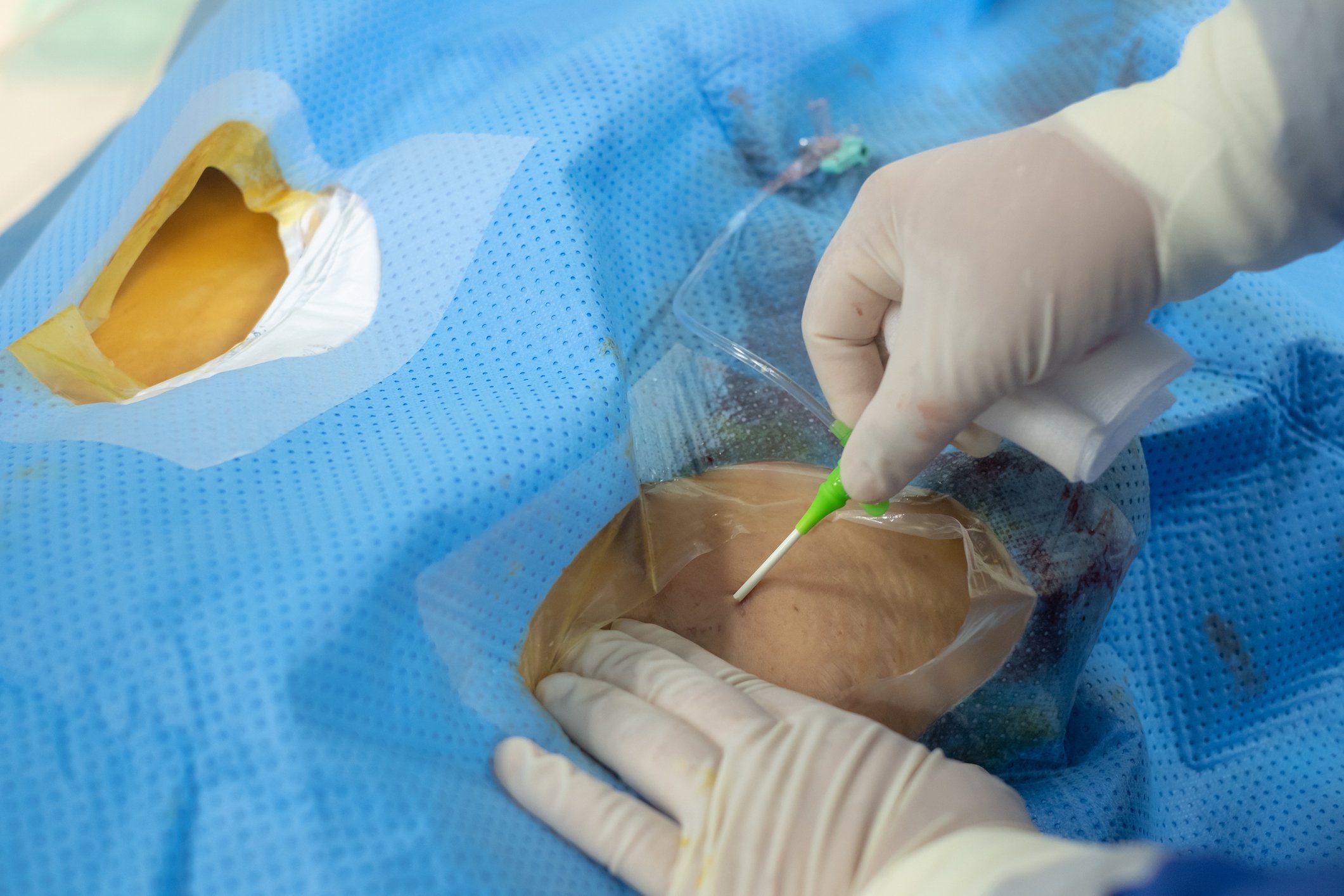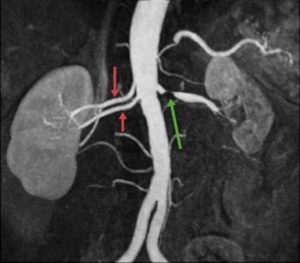What is a renal angiogram and angioplasty?
A renal angiogram is a special x-ray examination where pictures are taken of the main artery (blood vessel) to the kidney. A catheter (small plastic tube) is inserted into an artery, usually the femoral (leg) artery in your groin, the catheter follows the blood vessels to reach the arteries supplying the kidney.
Contrast medium (x-ray dye) is injected into the artery so that x-ray can be taken to show the blood flow in the kidney. The examination is done under local anaesthetic by a radiologist (a specialised x-ray doctor) who will be assisted by a radiographer and a radiology nurse. The procedure is done in the x-ray department and usually takes at least one hour.
If it is required and appropriate, the radiologist may go on to do an angioplasty and stent insertion (see below), as part of the procedure. However, it may be necessary to arrange this at a later date.
The radiologist will discuss this with you at the time to make the best decision for you.
A catheter (small plastic tube) being inserted in an artery in the groin. It then passes up the body and eventually into the kidney(s).


A renal angiogram – showing a stenosis (tightening) of the left renal artery and a ‘double artery’ on the right. Such variants are not unusual.
What is renovascular disease (RVD)?
RVD is a condition where there is narrowing or blockage of the renal (kidney) arteries, which supply blood to the kidneys. It leads to reduced blood flow to the kidneys, which in turn affects kidney function and raises blood pressure. It is a cause of CKD and AKI, and high blood pressure (that can be severe) mainly in older people, especially smokers.
Why is a renal angiogram/plasty done?
- Investigating CKD or AKI, when renal artery stenosis may be the cause. It can be suspected if you have AKI or CKD with very high blood pressure that does not come down with several high-dose blood pressure tablets – and there is no other obvious cause
Note. Most people with RAS do not need an angiogram/plasty. This is partly as there is not much evidence they are of benefit (see ASTRAL trial, 2009, STAR trial, 2009, CORAL trial, 2014 and review by Yesiltas, 2023). CKDEx debates the pros and cons (mainly cons) of a renal angiogram/plasty in a blog - Arteriovenous malformation, an abnormal formation of blood vessels
- Bulging (aneurysm) of the renal artery
- Thrombosis, a blockage of a renal artery due to blood clot.
What is a renal angioplasty and stent insertion?
A renal angioplasty is a procedure where a small balloon on the end of a catheter is inserted into the renal artery. The balloon is inflated to re-open a narrowed or blocked artery that has been identified during the angiogram. This technique means that surgery may be avoided in many cases.
A stent is a special device shaped like a small tubular metal cage. The stent expands in your artery to keep the blood vessel open, which improves blood flow through the narrowed vessel. If this is necessary, the radiologist will discuss this with you at the time.
What are the risks of a renal angiogram/plasty?
Like all procedures, a renal angiogram/plasty is not without risk. These are the main ones:
- Damage to the artery where the catheter was inserted, or the renal artery
- Allergic reaction to the x-ray dye used during the procedure
- Acute kidney injury (AKI) secondary to the x-ray dye (called contrast nephropathy). This occurs in upto 20% of patients, and can lead to temporary or permanent dialysis in upto 5%
- Excessive bleeding requiring a blood transfusion
- Rarely, a heart attack or stroke, or death (1%).
This is more information about the risks of renal angiogram/plasty.
Summary
We have described what is a renal angiogram and angioplasty. We hope it has been useful.
Other resources
This is some patient information from the hospital where two of the editors of this website work, UHCW Coventry.
Last Reviewed on 25 June 2024
